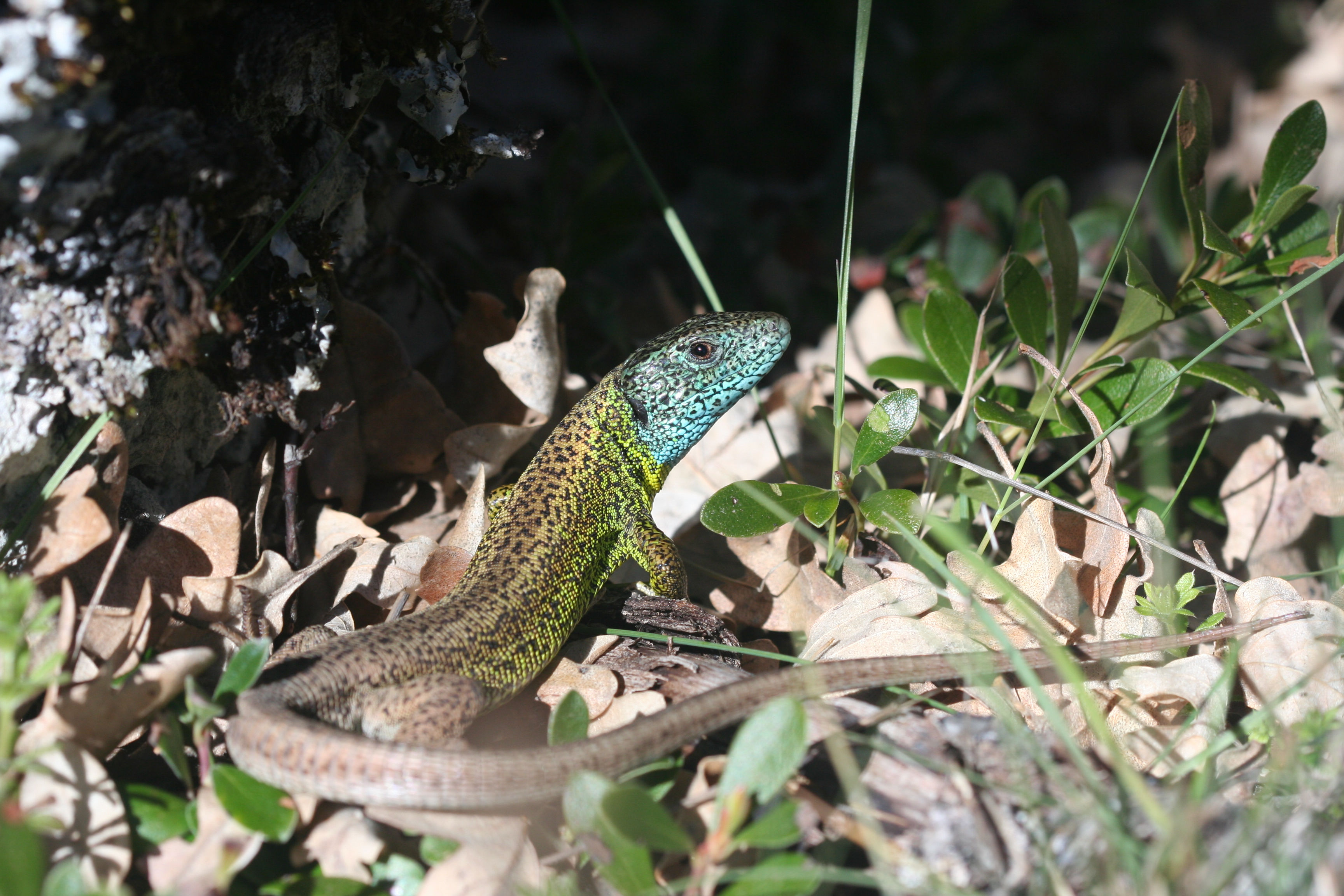
The blue head of the male endemic Iberian lizard Lacerta schreiberi is very intense in colour at ground level, to be more attractive to females and compete with other males, but less striking when viewed from the air by birds.
Researchers from the Cavanilles Institute of Biodiversity and Evolutionary Biology of the Universitat de València and from the Research Centre in Biodiversity and Genetic Resources (CIBIO) of the Universidade do Porto have discovered that the male endemic Iberian lizard Lacerta schreiberi uses iridescence to increase the efficiency of its chromatic signals, and thus be attractive to females and assert its authority over other males, and also to avoid its predators’ attack. This lizard, commonly found in the centre of the Iberian Peninsula, has a striking bluish head and scientists have just proven that this intense blue, which has a high ultraviolet content, “is much more noticeable at ground level to attract females more effectively, but from a greater height, the colour is almost camouflaged with other greenish and brownish shades to avoid attacks by predators such as birds”, explains professor Enrique Font, co-author together with Guillem Pérez i de Lanuza of the research work published in the Naturwissenschaften journal.
The discovery of this Iberian lizard’s iridescence by these experts in animal behaviour occurred by chance, since it emerged from the analysis at the laboratory of the images captured in the field. “We found that the intense blue of the head that we observed in nature did not match the colour in the picture, so we hypothesised the existence of this adaptive iridescence”, said Font. Thus, researchers used objective colour measurements and visual mathematical models applied to birds and lizards “to know how a bird sees these reptiles and how they are perceived by animals of the same species, from different perspectives”, explains Pérez i de Lanuza, researcher currently attached to the CIBIO.
Enrique Font points out that iridescence allows lizards to solve, “at least partly, the dilemma faced by all animals that need to communicate: to simultaneously ensure that their signals are very striking and easily detectable by the recipients to which they are addressed, but unattractive to others potentially unwanted”.
THE ADAPTIVE VALUE OF IRIDESCENCE
This research on the endemic Iberian lizard Lacerta schreiberi is the first to provide evidence of chromatic differences in the use of chromatic signals in lizards depending on the viewing angle, and also, it is the first study to demonstrate the adaptive function of the iridescent colouration based on the difference of detection by observers, who can exploit the chromatic signals depending on the viewing angle. Consequently, this study reveals that iridescence may be adaptive also in this context and “could have evolved to relax the commitment established between being detected by the target of a signal and being detected by other undesirable receivers”, they conclude.
Enrique Font is a tenured professor in the Department of Zoology and member of the Cavanilles Institute of Biodiversity and Evolutionary Biology, where he leads a research group on ethology (animal behaviour), currently focused on the study of animal communication, especially of lizards. For his part, Guillem Pérez i de Lanuza specialises in the study of animal communication in relation to animal colouration and colour vision. Specifically, he is focusing his efforts on the study of the evolution of certain aspects of the colouration of lizards, which form a very complex and variable group that allows all types of research related to colour. Currently, he is studying the evolutionary forces that lie behind the emergence and maintenance of a population’s polychromatism over time.
Link to the online article:
http://link.springer.com/article/10.1007%2Fs00114-014-1224-9
Links:
Images:





















